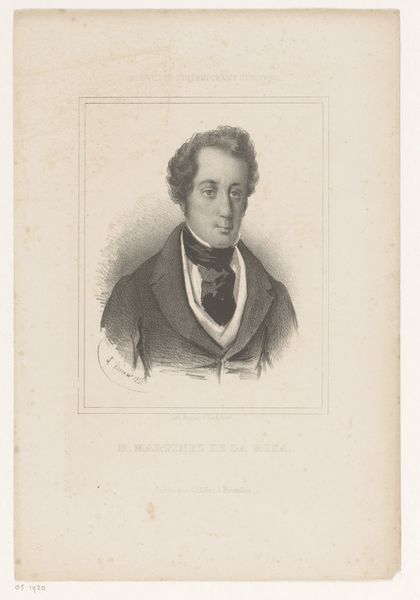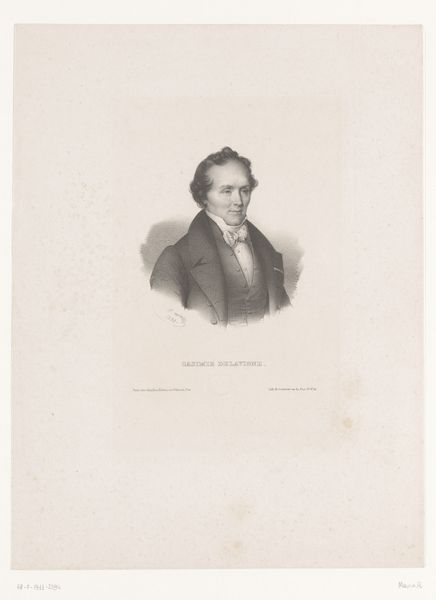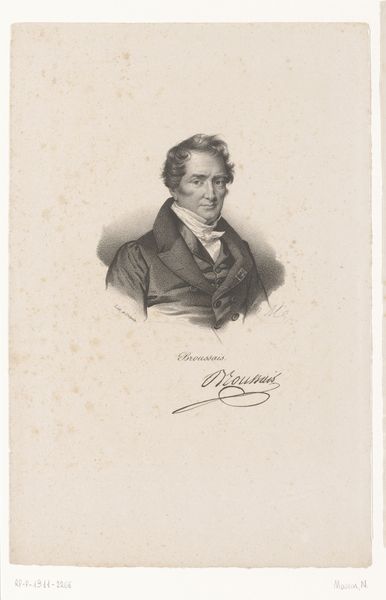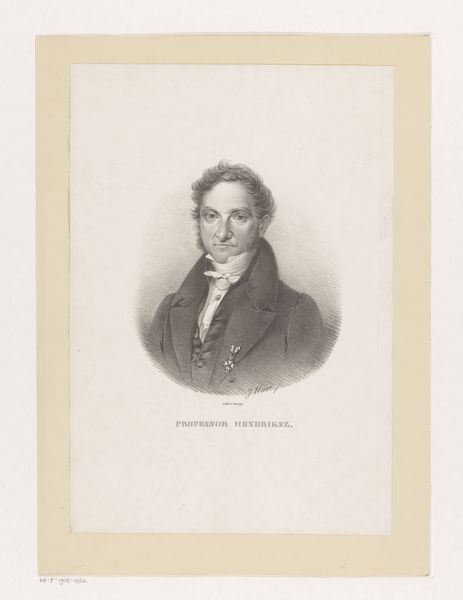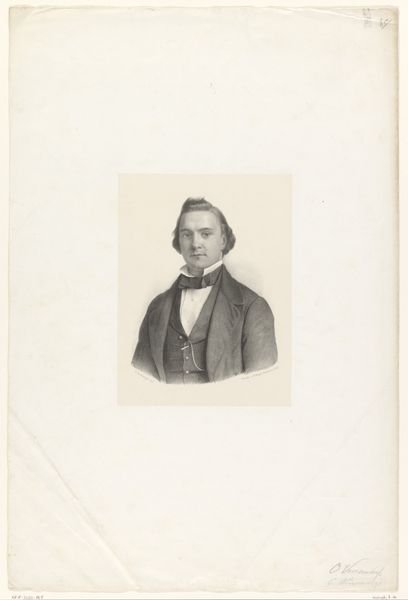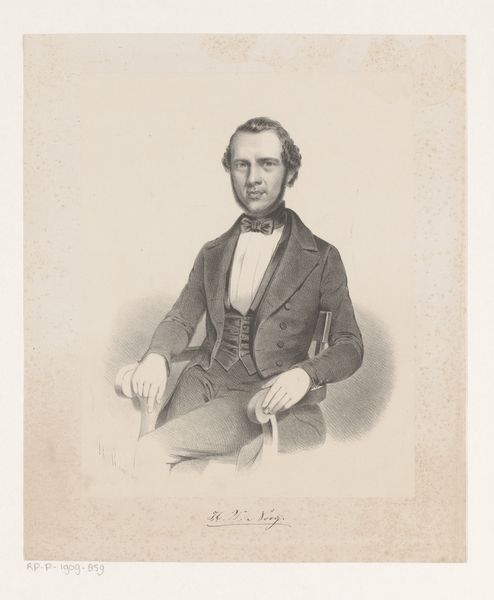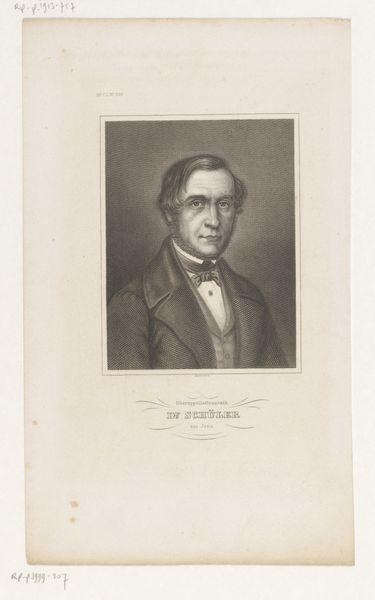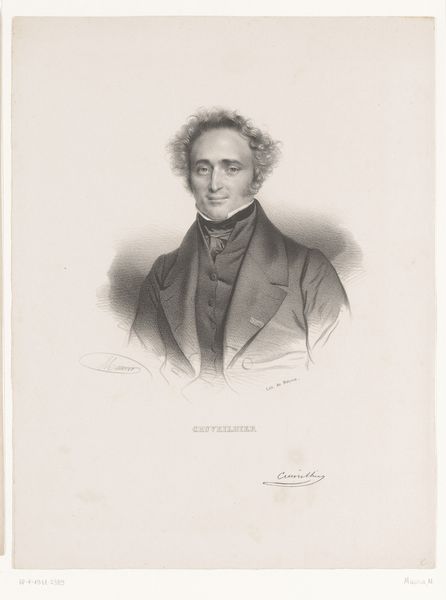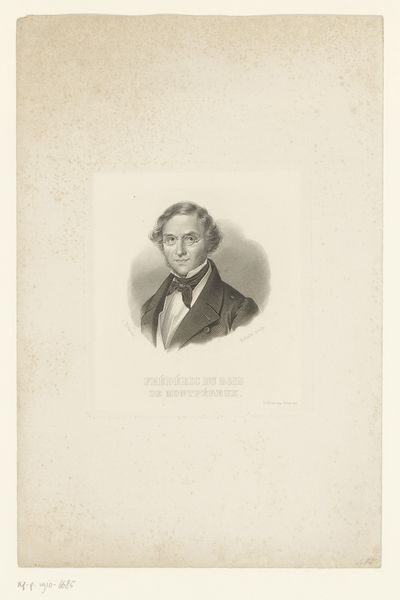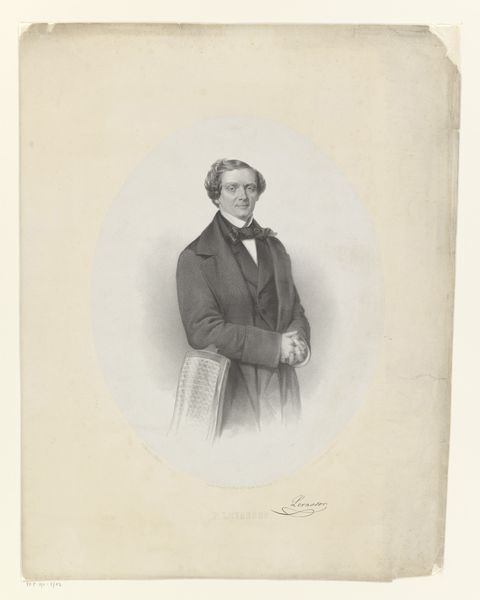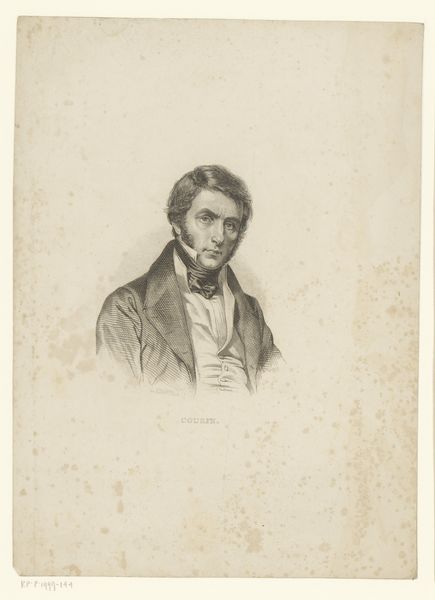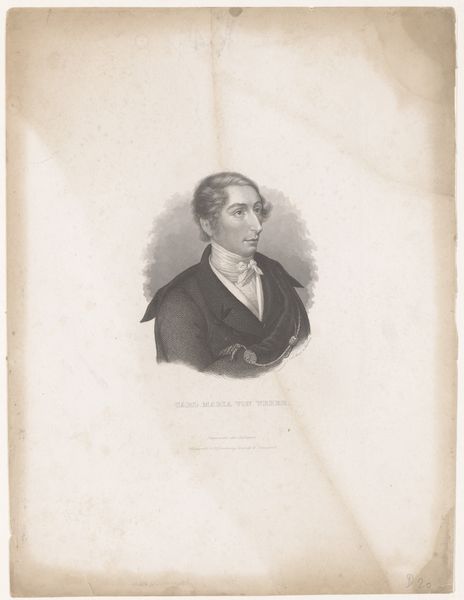
print, engraving
#
portrait
#
neoclacissism
# print
#
pencil drawing
#
19th century
#
engraving
Dimensions: height 524 mm, width 341 mm
Copyright: Rijks Museum: Open Domain
Curator: Before us is a portrait of Casimir Delavigne, produced between 1825 and 1842 by Nicolas Maurin. This work, categorized as neoclassical, employs printmaking techniques such as engraving. Editor: Wow, he looks so proper. Almost stern. The severe cut of his coat, the controlled curl of his hair – it all speaks to a very specific sense of... well, constraint. Curator: Constraint is an interesting word choice. Given the historical context, constraint might be reflective of broader societal expectations placed on men of status, expectations around composure and intellect, rather than emotional expression. Neoclassical art often invokes notions of order and reason, perhaps to contrast against revolutionary fervor. Editor: I see that, definitely. There's also this sense of fragility, though. It's odd, because everything about the portrait *screams* power and authority. But then you look at the paper itself, so delicate. I'm getting conflicting vibes here. Like, "I'm a pillar of society, but also, please handle me with care." Curator: That perceived fragility may stem from the chosen medium. The engraving process, while capable of producing precise detail, is rendered on paper, making the final image vulnerable to the ravages of time. Its preservation becomes a statement, if you will. How do we safeguard legacies, not only symbolically but materially? Editor: Exactly! Plus, portraits have always been so performative, right? Staging a persona for posterity. Do you think Delavigne knew he was being, essentially, framed? And how complicit was he? I guess that’s true for all portraiture, isn’t it? But his...it's almost theatrical. Curator: Indeed. He was very conscious of how he would be remembered. That’s what I love about portraiture; they're historical records that capture the dialogue between the sitter, the artist, and their social milieu. They can act as portals into bygone eras and prompt inquiries into individual and collective identities. Editor: That makes you think how we curate our own images on social media. Who are we trying to be? What version of ourselves are we hoping people will remember? It's the same impulse, just a different medium. Anyway, thanks for walking me through this – you really gave me something to chew on. Curator: It was my pleasure. Hopefully, listeners can bring new questions about portraits after considering the sociohistorical frameworks we addressed today.
Comments
No comments
Be the first to comment and join the conversation on the ultimate creative platform.
